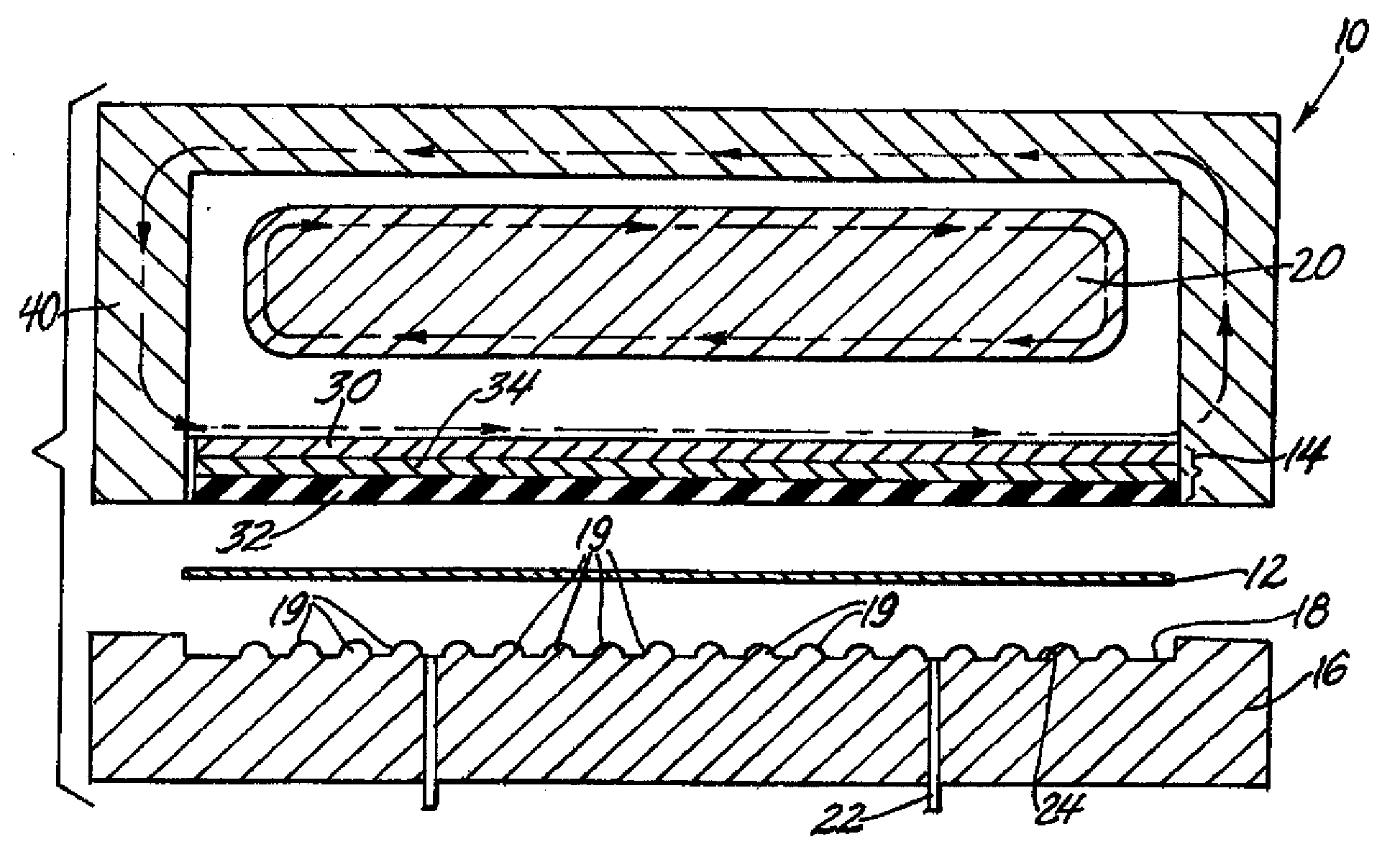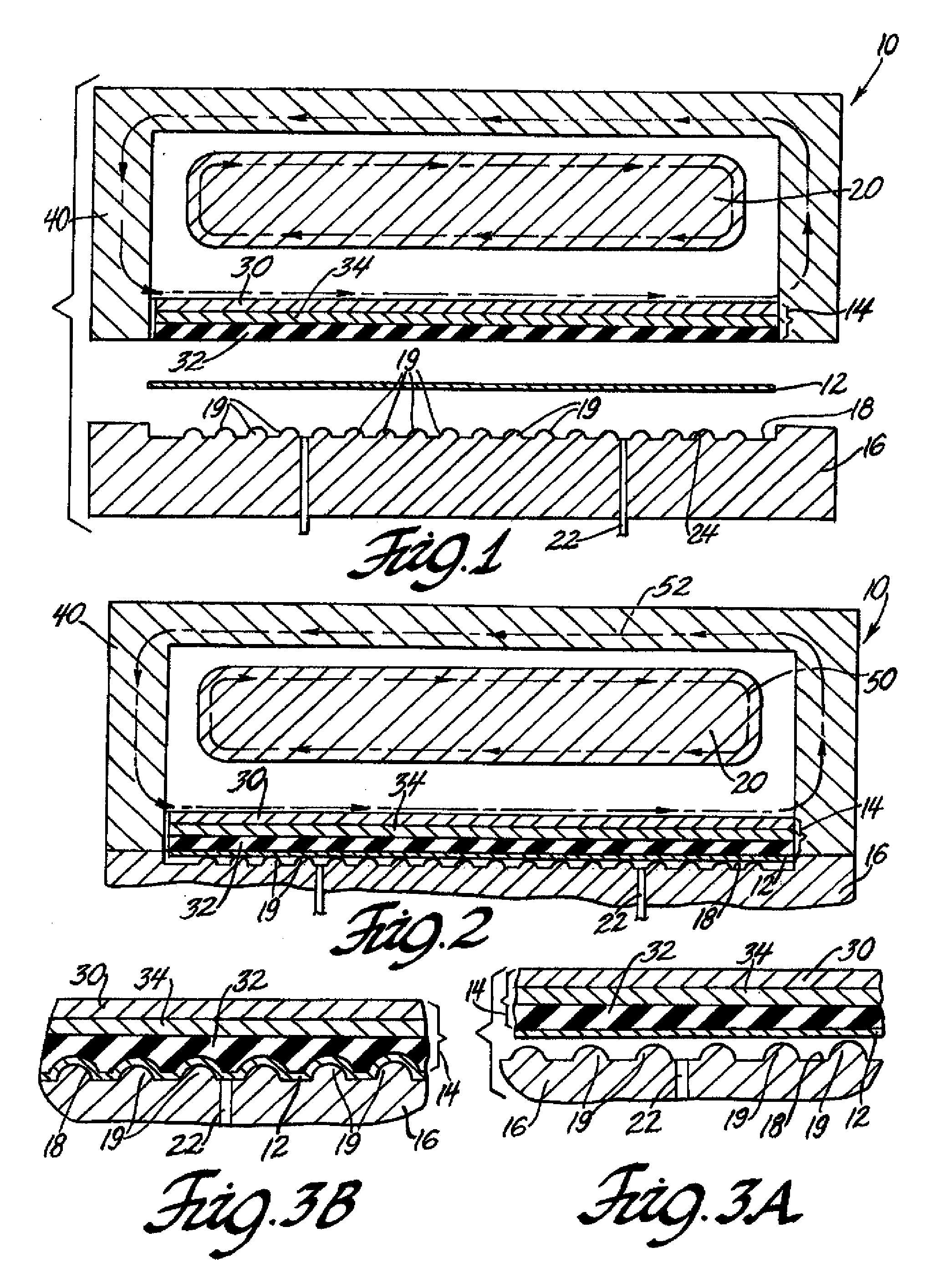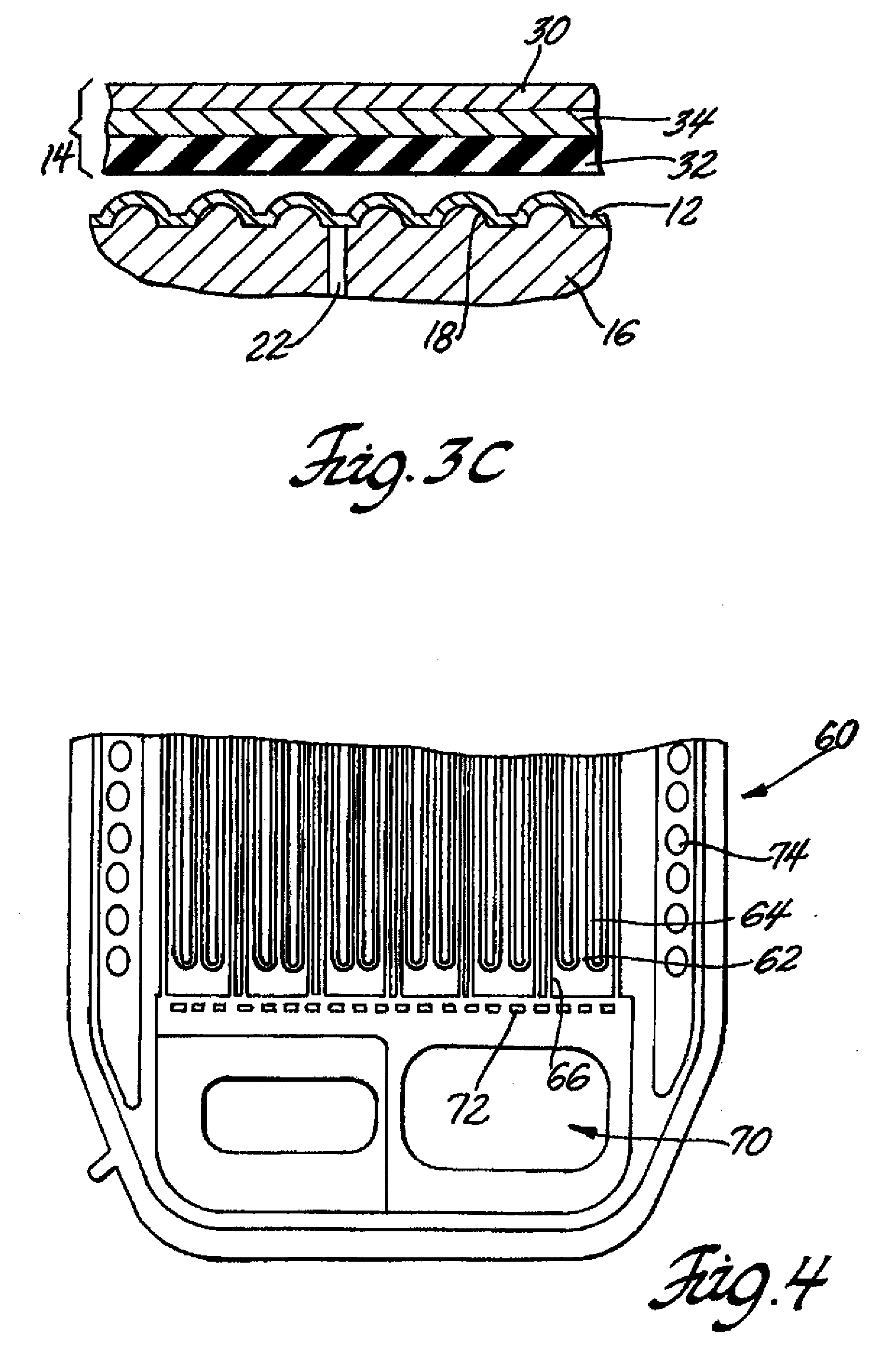Driver plate for electromagnetic forming of sheet metal
a technology of electromagnetic forming and drive plate, which is applied in the direction of metal working apparatus, manufacturing tools, and shape safety devices, etc., can solve the problem that the desired sheet metal workpiece may lack suitable electrical conductivity
- Summary
- Abstract
- Description
- Claims
- Application Information
AI Technical Summary
Benefits of technology
Problems solved by technology
Method used
Image
Examples
Embodiment Construction
[0023]The description of the following embodiment(s) is merely exemplary in nature and is in no way intended to limit the claimed invention, its application, or its uses.
[0024]EMF sheet metal forming techniques are useful in forming thin sheet metal workpieces and may be utilized either alone or in combination with more traditional metal forming techniques, such as stamping. A noted advantage associated with EMF metal forming is its ability to satisfactorily stretch metals at strain rates that would ordinarily cause tearing if performed by a conventional forming process. In fact, EMF can achieve strain rates of up to approximately 105 sec−1 and sheet velocities in the range of 50 to 300 m / s. A single deformation step of a sheet metal workpiece is completed within a few tens of microseconds or so. These capabilities make EMF well suited for shallow forming of thin metal sheets. For example, in one embodiment, an EMF forming operation may be employed to perform one or more steps in th...
PUM
| Property | Measurement | Unit |
|---|---|---|
| Depth | aaaaa | aaaaa |
| Thickness | aaaaa | aaaaa |
| Strength | aaaaa | aaaaa |
Abstract
Description
Claims
Application Information
 Login to View More
Login to View More - R&D
- Intellectual Property
- Life Sciences
- Materials
- Tech Scout
- Unparalleled Data Quality
- Higher Quality Content
- 60% Fewer Hallucinations
Browse by: Latest US Patents, China's latest patents, Technical Efficacy Thesaurus, Application Domain, Technology Topic, Popular Technical Reports.
© 2025 PatSnap. All rights reserved.Legal|Privacy policy|Modern Slavery Act Transparency Statement|Sitemap|About US| Contact US: help@patsnap.com



